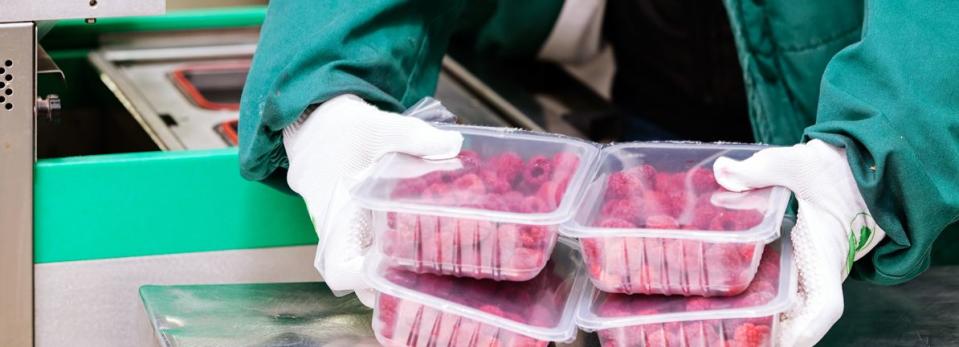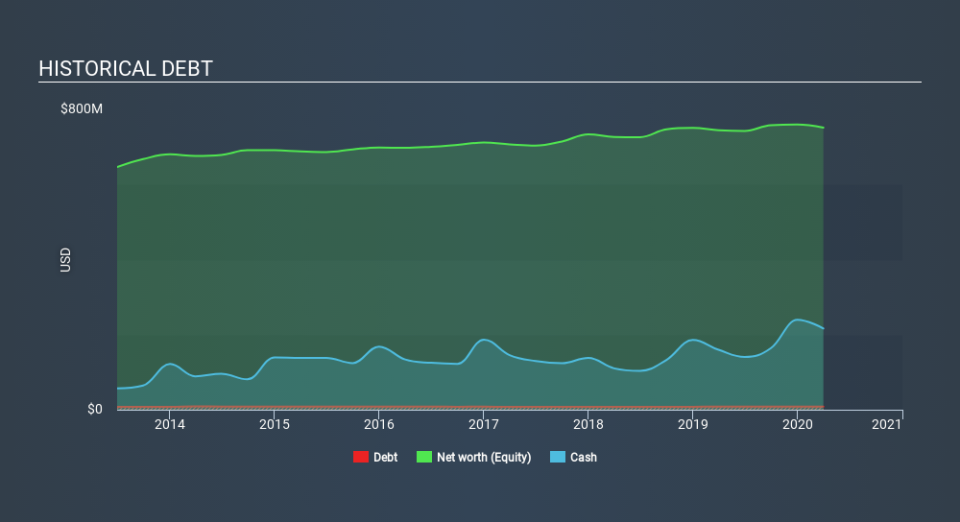Does Tootsie Roll Industries (NYSE:TR) Have A Healthy Balance Sheet?

Howard Marks put it nicely when he said that, rather than worrying about share price volatility, 'The possibility of permanent loss is the risk I worry about... and every practical investor I know worries about. When we think about how risky a company is, we always like to look at its use of debt, since debt overload can lead to ruin. We note that Tootsie Roll Industries, Inc. (NYSE:TR) does have debt on its balance sheet. But the real question is whether this debt is making the company risky.
What Risk Does Debt Bring?
Generally speaking, debt only becomes a real problem when a company can't easily pay it off, either by raising capital or with its own cash flow. Ultimately, if the company can't fulfill its legal obligations to repay debt, shareholders could walk away with nothing. While that is not too common, we often do see indebted companies permanently diluting shareholders because lenders force them to raise capital at a distressed price. Of course, the upside of debt is that it often represents cheap capital, especially when it replaces dilution in a company with the ability to reinvest at high rates of return. When we examine debt levels, we first consider both cash and debt levels, together.
View our latest analysis for Tootsie Roll Industries
What Is Tootsie Roll Industries's Net Debt?
As you can see below, Tootsie Roll Industries had US$8.28m of debt, at March 2020, which is about the same as the year before. You can click the chart for greater detail. However, its balance sheet shows it holds US$216.6m in cash, so it actually has US$208.3m net cash.
How Healthy Is Tootsie Roll Industries's Balance Sheet?
Zooming in on the latest balance sheet data, we can see that Tootsie Roll Industries had liabilities of US$77.2m due within 12 months and liabilities of US$127.2m due beyond that. Offsetting these obligations, it had cash of US$216.6m as well as receivables valued at US$39.5m due within 12 months. So it actually has US$51.6m more liquid assets than total liabilities.
This short term liquidity is a sign that Tootsie Roll Industries could probably pay off its debt with ease, as its balance sheet is far from stretched. Simply put, the fact that Tootsie Roll Industries has more cash than debt is arguably a good indication that it can manage its debt safely.
On top of that, Tootsie Roll Industries grew its EBIT by 34% over the last twelve months, and that growth will make it easier to handle its debt. There's no doubt that we learn most about debt from the balance sheet. But you can't view debt in total isolation; since Tootsie Roll Industries will need earnings to service that debt. So if you're keen to discover more about its earnings, it might be worth checking out this graph of its long term earnings trend.
Finally, while the tax-man may adore accounting profits, lenders only accept cold hard cash. Tootsie Roll Industries may have net cash on the balance sheet, but it is still interesting to look at how well the business converts its earnings before interest and tax (EBIT) to free cash flow, because that will influence both its need for, and its capacity to manage debt. During the last three years, Tootsie Roll Industries produced sturdy free cash flow equating to 74% of its EBIT, about what we'd expect. This free cash flow puts the company in a good position to pay down debt, when appropriate.
Summing up
While we empathize with investors who find debt concerning, you should keep in mind that Tootsie Roll Industries has net cash of US$208.3m, as well as more liquid assets than liabilities. And it impressed us with its EBIT growth of 34% over the last year. So is Tootsie Roll Industries's debt a risk? It doesn't seem so to us. The balance sheet is clearly the area to focus on when you are analysing debt. However, not all investment risk resides within the balance sheet - far from it. Consider risks, for instance. Every company has them, and we've spotted 1 warning sign for Tootsie Roll Industries you should know about.
At the end of the day, it's often better to focus on companies that are free from net debt. You can access our special list of such companies (all with a track record of profit growth). It's free.
If you spot an error that warrants correction, please contact the editor at editorial-team@simplywallst.com. This article by Simply Wall St is general in nature. It does not constitute a recommendation to buy or sell any stock, and does not take account of your objectives, or your financial situation. Simply Wall St has no position in the stocks mentioned.
We aim to bring you long-term focused research analysis driven by fundamental data. Note that our analysis may not factor in the latest price-sensitive company announcements or qualitative material. Thank you for reading.

 Yahoo Finance
Yahoo Finance 
